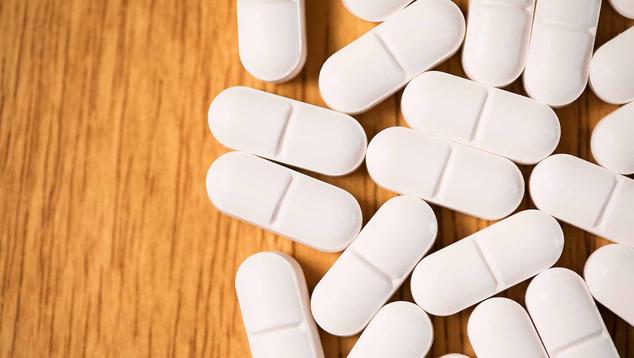Story Highlights
- Opioid epidemic drove record-breaking drug overdose deaths in 2022
- High statewide wellbeing linked to lower and slower-rising overdose rates
- Career wellbeing stands out as key to curtailing drug overdose deaths
WASHINGTON, D.C. -- Drug overdose death rates have risen in the U.S. at alarming levels over the past two decades, characterized overwhelmingly by a staggering rise in opioid abuse.
According to the Centers for Disease Control and Prevention, age-adjusted overdose deaths increased from 6.1 per 100,000 persons in 1999 to 32.4 per 100,000 in 2021. Death rates have risen for all racial/ethnic groups, and men are at a much higher risk than women, although the rate has more than quadrupled for both groups over this period.
In 2022, the number of drug overdose deaths in the U.S. reached an all-time (predicted) high of 109,680, slightly exceeding the previous high measured in 2021 and representing an astonishing 32.9 overdoses per 100,000 persons. This underscores the 55% surge in deaths since 2019, the last year before the COVID-19 pandemic.
A dramatic increase in abuse of opioids has overwhelmingly driven the sharp rise in drug overdose deaths over the past two decades. This has occurred amid a steady rise in natural and semisynthetic opioids such as the painkillers oxycodone and hydrocodone, typically considered gateway medications to other still more addictive and more dangerous drugs. Heroin overdoses increased nearly fivefold between 2010 and 2020, and overdoses from synthetic opioids (other than methadone) such as fentanyl increased tenfold between 2014 and 2020. (Methadone is used to reduce opioid withdrawal symptoms among addicts but can also cause addiction in some cases.)
Of the predicted 109,680 overdose deaths in 2022, 82,998 (about 75%) were opioid-involved. At the current pace, about 300 Americans die every day from a drug overdose, including 225 due to opioids. (Predicted overdose deaths are always slightly higher than official reported overdose deaths.)
The opioid crisis has created a significant cost for the U.S. economy. According to a 2019 report from the Society of Actuaries, at least $631 billion was drained from the economy due to opioid use from 2015 to 2018, 40% of which was the cost of lost lifetime productivity due to premature mortality. Factors such as healthcare spending for individuals with opioid use disorder, criminal justice costs, and government-funded child and family assistance programs and education programs were among the other cost centers contributing to the total amount. The sharply escalated rate of opioid abuse during the COVID-19 era has almost certainly further amplified these estimates.
Wellbeing Inversely Related to Drug Overdose Rates Among States
Amid the worsening opioid epidemic, the potential exists to mitigate it by expanding and elevating wellbeing. To illustrate, an analysis of the 2017 state ranks based on overall Well-Being Index scores shows that the highest-wellbeing states in 2017 had substantially lower average drug overdose rates in 2018 than what was found among the lowest-wellbeing states.
Furthermore, the rate of increase in the following two years also varied greatly, with the five lowest-wellbeing states in 2017 (West Virginia, Louisiana, Arkansas, Mississippi and Kentucky) increasing their already elevated overdose rates another 15.8 cases per 100,000 residents, on average -- compared with an increase of 5.3 cases per 100,000 among the five highest-wellbeing states (South Dakota, Vermont, Hawaii, Minnesota and North Dakota).
Wellbeing Is a Stronger Influencer on Overdose Rates Than the Reverse
While each influences the other -- high drug overdose rates are harmful to the overall wellbeing of the population, and low overall wellbeing of the population increases the chances of higher drug overdose rates -- evidence suggests that the two effects are not equal. In three successive analyses of year-over-year data, the overall Well-Being Index score for the 50 states was inversely related to the drug overdose rate the following year. While the reverse relationship (i.e., drug overdose rates correlated with the following year’s WBI score) was also seen, it was much less strong (-.505 to -.373).
As such, these data suggest that the wellbeing of a state’s population is likely a stronger influence on future drug overdose rates than the other way around. Stated a little differently, high population wellbeing can serve an insulating function, whereby a cultural foundation exists that lowers the probability of per capita drug overdoses the following year. High drug overdose rates, in turn, reduce the probability of high population wellbeing the following year, but to a lesser extent.
Career Wellbeing Has Strongest Relationship to Future Drug Overdose Rates
Going one level deeper into the five specific elements of wellbeing, all five are inversely related to the next year’s drug overdose rate -- but the relationship with career wellbeing is strongest by far, outpacing social, financial, physical and community wellbeing.
Individual aspects of wellbeing are also critically important to understanding what increases or decreases drug overdose rates in states. The following are the most important warning signs for individuals who are at the highest risk:
Career Wellbeing:
- Does not have a leader in their life who creates enthusiasm about the future
- Does not like what they do every day
- Does not routinely learn or do interesting things
Social Wellbeing:
- Does not have someone in their life who encourages good health
- Does not receive positive energy from friends and family
Financial Wellbeing:
- Is not satisfied with standard of living compared with the people around them
Physical Wellbeing (Physical Health/Pain):
- Currently has or is being treated for asthma
- Currently has or is being treated for high cholesterol
- Disagrees that physical health is “near perfect”
- Has significant daily physical pain
- Has ever had a heart attack
Physical Wellbeing (Physical Energy/Activity):
- Healthcare provider has limited their exercise
- Has not felt active and productive in prior seven days
- Poor health has prevented normal activity two or more days in the past month
Physical Wellbeing (Mental Health):
- Does not feel good about physical appearance
- Has been clinically diagnosed with or is being treated for depression
Community Wellbeing:
- Is not proud of the community where they live
Further Points to Consider
Many of the wellbeing-related warning signs of drug overdoses can signify an outcome of the abuse of drugs rather than its cause.
For example, according to the American Society of Addiction Medicine, individuals who abuse opioids are at an increased risk of developing cardiovascular issues, including high cholesterol, due in part to a lack of personal maintenance that can result in a very poor diet. Stimulants such as cocaine and methamphetamine, in turn, have long been associated with increased risk of both high blood pressure and high cholesterol as they result in the thinning of the heart muscles and arteries that interact with LDL (low-density lipoprotein) cholesterol.
Asthma is likely related to opioid abuse in both directions. According to research published by the American Academy of Allergy Asthma & Immunology, asthma is more common in opioid-dependent patients. Opioid use can directly activate the release of histamine, which is a core component of allergy-related reactions, including asthma. Asthma can also result in opioid use, as opioids are also frequently prescribed for asthmatics for pain management, which can lead to addiction and abuse.
Other metrics also likely maintain a reciprocal relationship with opioid and other drug overdoses. Depression, not learning or doing interesting things, not having someone in your life who cares about your health, and not feeling good about your physical appearance are all aspects of wellbeing that could reasonably increase the chances of drug abuse or (alternatively) that could be its outcome if those factors were missing from a person’s life.
Despite any uncertainty regarding the strength of the directionality of the relationships, liking what you do each day, leading an active lifestyle, having strong social relationships, learning on an ongoing basis, and being inspired about the future by leaders are all clear elements of reduced chances of drug abuse, addiction and overdose. As such, policymakers and influencers would be well-served leveraging a holistic wellbeing approach in efforts to bend the curve of the opioid epidemic.
To stay up to date with the latest Gallup News insights and updates, follow us on Twitter.
Learn more about how the Gallup Panel works.




